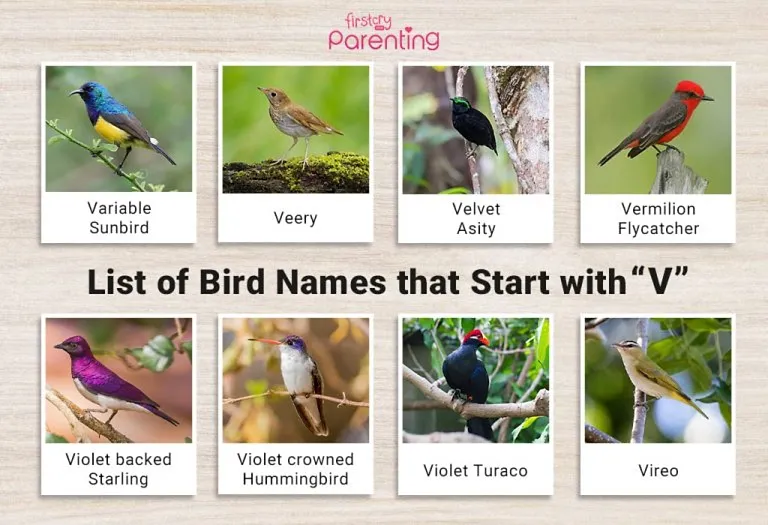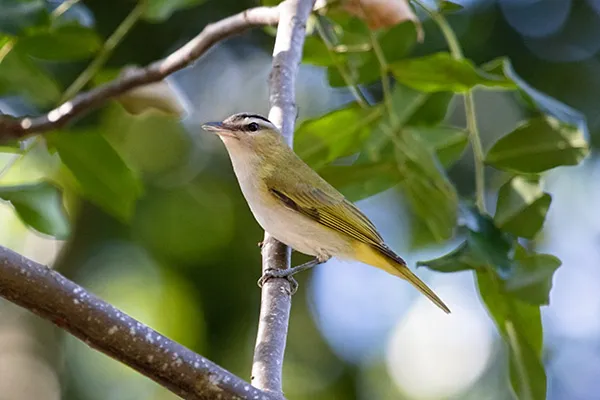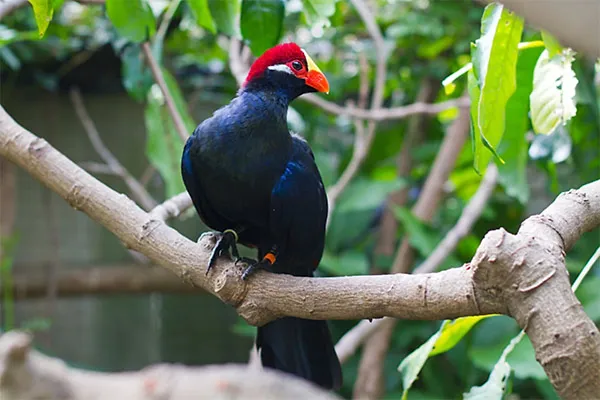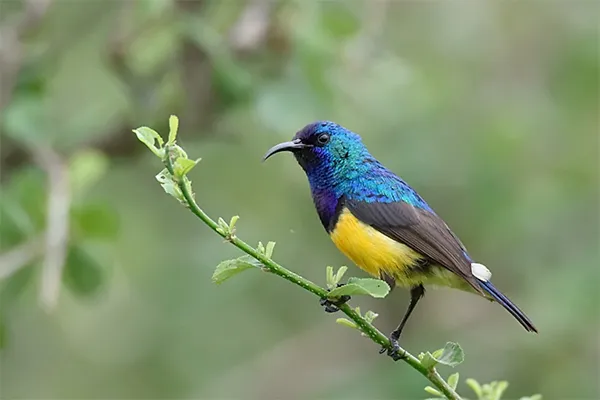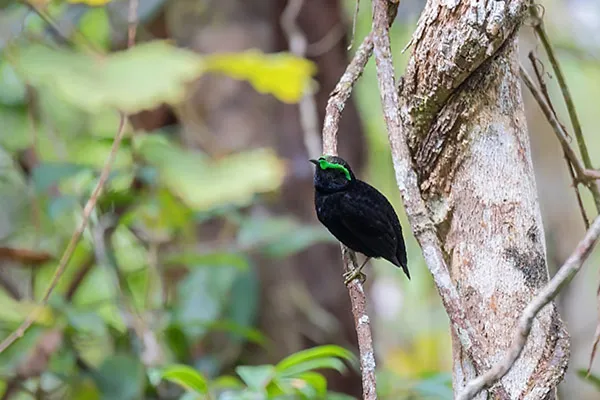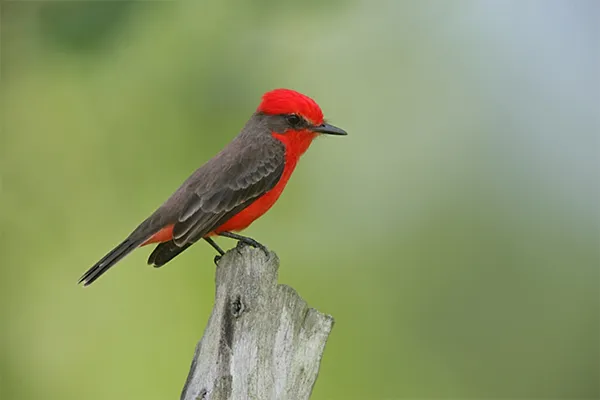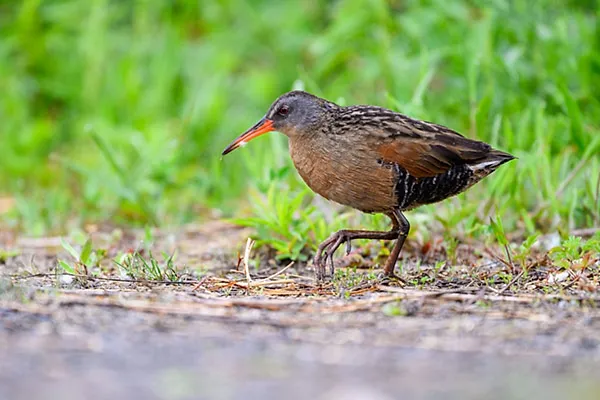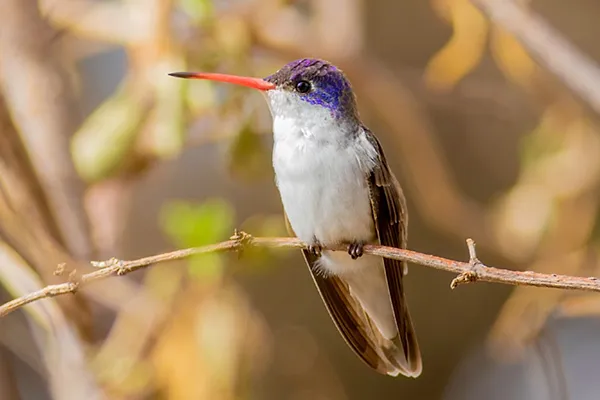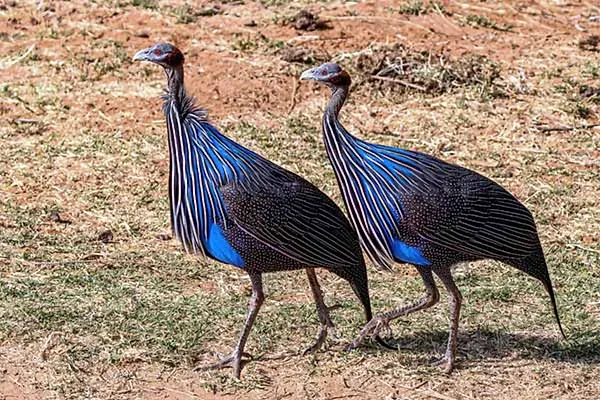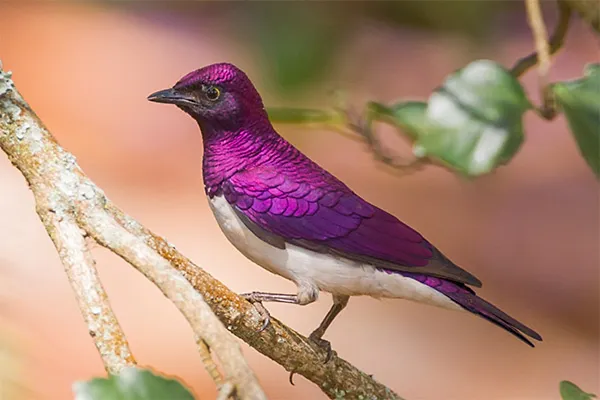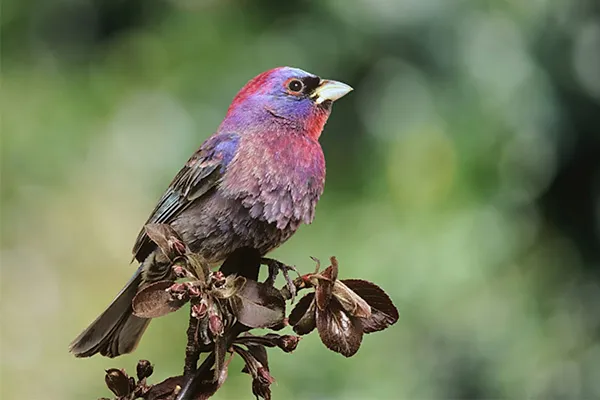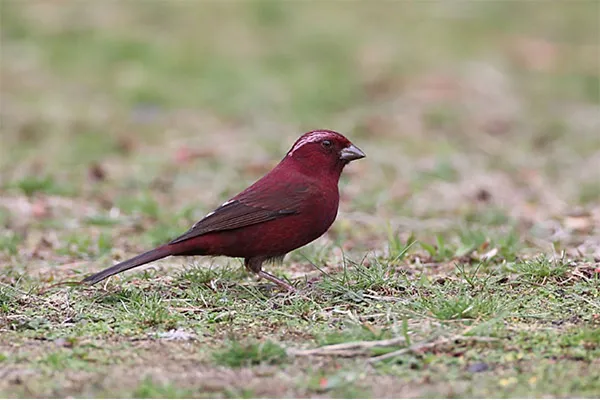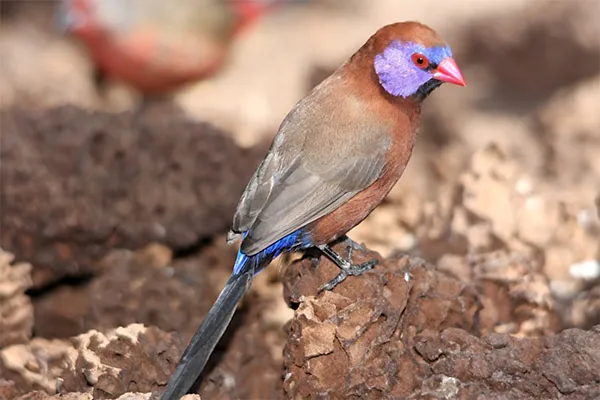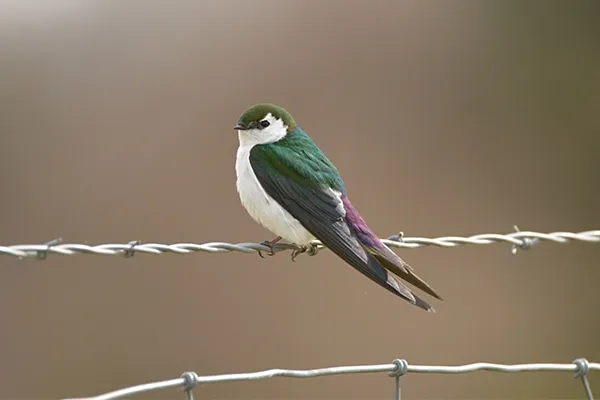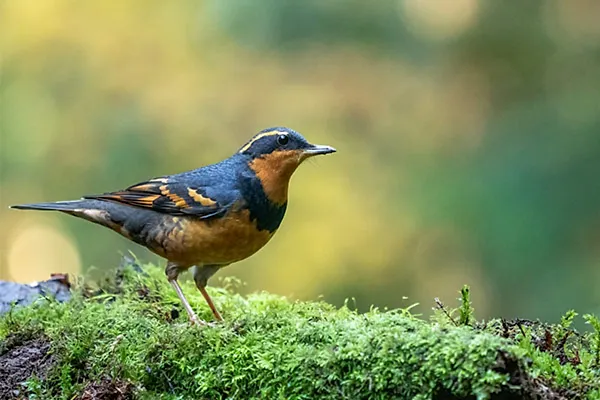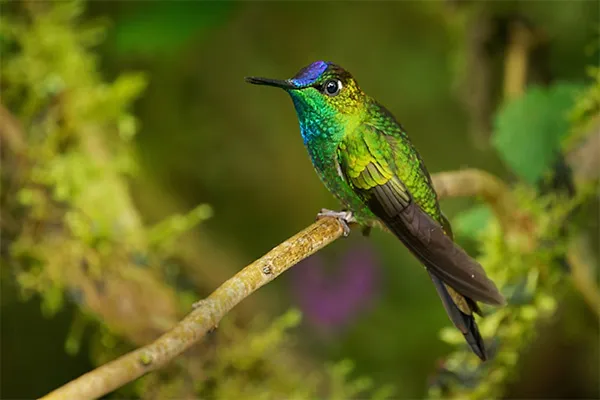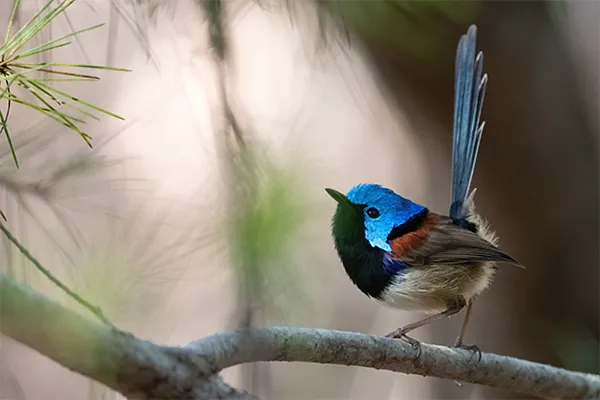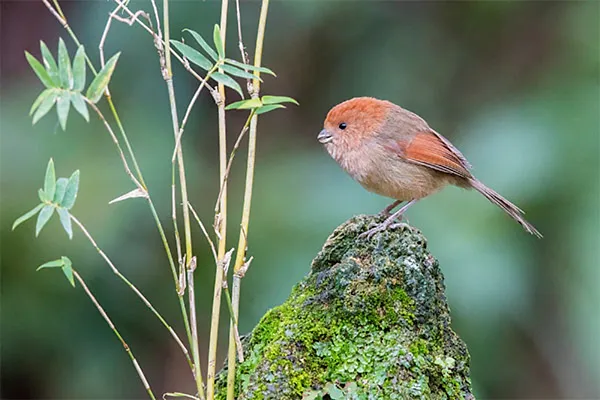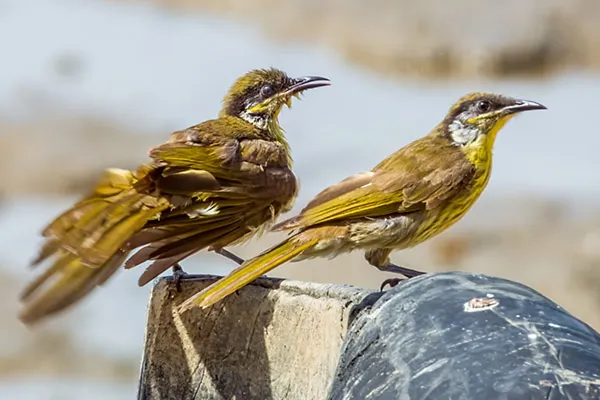List of Birds That Start With V
- List Of Common Birds That Start With V
- Other Birds Beginning With V
- FAQs
- Birds Names That Begin With (A to Z)
Our planet is blessed with countless bird species, each unique and mesmerising in its own right. Learning bird names is educational and fun, especially for curious young minds. Whether you’re an enthusiastic parent helping your child with homework or a teacher looking to expand your students’ vocabulary, this list is here to help. Explore the various bird names that start with the letter ‘V’ and indulge in the beauty and diversity of our feathery friends. These V-letter bird names for preschoolers and kids are not just names on a page – they’re a delightful addition to any kids’ vocabulary and a window into the natural world.
List Of Common Birds That Start With V
As we explore the aviary world, we discover its vast diversity. Concentrating on birds beginning with the letter V, we find an array of avian marvels, each with unique traits. Whether you’re an ornithology enthusiast or simply looking to expand your knowledge, these bird names with a ‘V’ list will pique your interest.
1. Vireo
Scientific Name: Vireo olivaceus
Where It Is Found: Across North and Central America
Vireos are small to medium-sized songbirds. Their olive-green upper parts recognise this contrasted with white underparts. They often charm onlookers with melodic tunes. Found in trees, these active feeders predominantly survive on a diet of insects and fruits.
Interesting Facts
- Did you know the name Vireo is derived from the Latin phrase, ‘I am green?’
- This bird also exhibits a unique behaviour known as ‘wing-flicking,’ a tactic to unmask hidden insects.
2. Violet Turaco
Scientific Name: Musophaga violacea
Where It Is Found: Forests and woodlands of West Africa
The Violet Turaco stands out with its radiant violet feathers and a striking yellow band around its eyes. These birds are relatively large, with long tails and strong, stout beaks. Their diet mainly consists of fruits, particularly figs, but they sometimes consume insects too.
Interesting Facts
- Although they have vibrant violet and blue colours, these hues are not a result of iridescence but are genuinely pigmented. This means they retain their colour even if the feather is crushed.
3. Veery
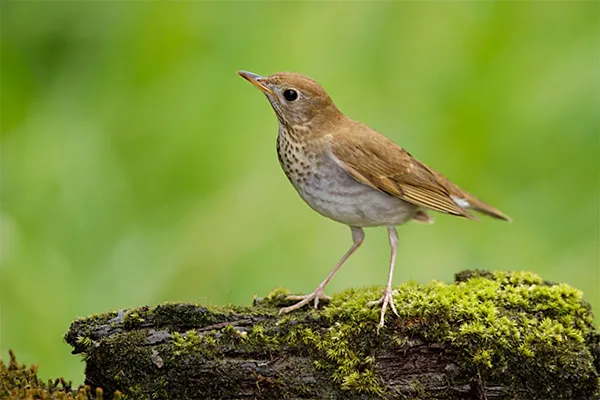
Scientific Name: Catharus fuscescens
Where It Is Found: North America during summer, migrating to South America in winter
The Veery is a thrush known for its warm cinnamon-coloured upper parts and spotted breasts. This bird has a unique spiralling song, creating an enchanting atmosphere in the forests it inhabits. It primarily feeds on insects and berries.
Interesting Facts
- The Veery’s song has been described as one of nature’s most hauntingly beautiful sounds. Interestingly, they can sing two notes simultaneously due to a split windpipe.
4. Variable Sunbird
Scientific Name: Nectarinia venusta
Where It Is Found: Across various parts of Africa
This tiny bird boasts a beautiful metallic sheen on its feathers, which can appear in various colours depending on the light. The male is more vibrant than the female, with bright patches of iridescent colours. They feed on nectar, hence their name, but also eat insects.
Interesting Facts
- The Variable Sunbird has a unique brush-tipped tongue that assists in nectar feeding.
- Their vibrant colours play a crucial role in attracting mates.
5. Velvet Asity
Scientific Name: Philepitta castanea
Where It Is Found: Madagascar’s dense rainforests
The Velvet Asity is a small, striking bird with deep velvet-black plumage and a vivid green eye ring. During the breeding season, males are incredibly vibrant, which attracts females. Their diet consists mainly of fruits, nectar, and insects.
Interesting Facts
- The green eye-ring of the male Velvet Asity enlarges and becomes even brighter during mating season, making it an irresistible sight for its potential mates.
6. Vermilion Flycatcher
Scientific Name: Pyrocephalus rubinus
Where It Is Found: Southwestern U.S. to Central South America
Recognisable by its bright red plumage, the Vermilion Flycatcher is a small bird that exhibits a striking contrast against its native desert habitats. While males boast a radiant red, females are more modestly coloured in peach and brown tones. These birds mainly consume insects, which they often catch mid-air.
Interesting Facts
- Despite their vibrant colour, these birds are not very vocal. Their song is a series of short, sharp notes, often used to mark their territory.
7. Virginia Rail
Scientific Name: Rallus limicola
Where It Is Found: Marshes of North and Central America
The Virginia Rail is a medium-sized waterbird with a long, curved bill ideal for probing in mud for food. With a streaked brown upper body and grey cheeks, they are perfectly camouflaged among the reeds and marsh grasses where they reside. Their diet is primarily made up of insects, small fish, and crustaceans.
Interesting Facts
- This bird’s name might be misleading, as it is found across much more of the continent than just Virginia.
- They are also known to be quite elusive, often heard more than they are seen.
8. Violet-crowned Hummingbird
Scientific Name: Amazilia Violiceps
Where It Is Found: Southwestern U.S. to Mexico
This hummingbird boasts a dazzling violet crown, from which its name is derived, contrasting against its green metallic body. With rapid wing flaps, it can hover over flowers to sip nectar with its long, slender bills. It also eats insects for protein.
Interesting Facts
- Hummingbirds, including the Violet-crowned, have the highest metabolism of any bird species. Their wings can flap as fast as 50 times per second!
9. Vulturine Guineafowl
Scientific Name: Acryllium vulturinum
Where It Is Found: Dry grasslands and forests of northeastern Africa
The Vulturine Guineafowl is the most prominent and most striking of all guineafowl species. It gets its name because its bare face and neck resemble a vulture. The bird has a royal blue chest, dotted upper parts, and long, glossy blue-black feathers.
Interesting Facts
- These birds are very social and are often seen in large groups. Unlike other guineafowls, Vulturine Guineafowls are not known to roost in trees.
10. Violet-backed Starling
Scientific Name: Cinnyricinclus leucogaster
Where It Is Found: Sub-Saharan Africa
The Violet-backed Starling is a petite bird with a distinct sexual dimorphism. While the male flaunts a brilliant violet back contrasted against a white belly, the female sports brown shades with streaked underparts. Often seen in open woodlands and savannas, their diet includes insects, fruits, and nectar.
Interesting Facts
- Also known as the Plum-coloured Starling, these birds often migrate in large flocks, creating a mesmerising spectacle when their violet feathers catch the sunlight.
11. Varied Bunting
Scientific Name: Passerina versicolor
Where It Is Found: Southwestern U.S. to Central America
The Varied Bunting is a small songbird with dazzlingly colourful plumage. Males display various colours, from bright red and purple to deep blue, while females have a more subdued brown appearance. These birds primarily thrive in thickets and brushy areas, feeding on seeds and small insects.
Interesting Facts
- Despite their vibrant appearance, Varied Buntings are pretty secretive, often staying hidden in dense vegetation, making them a delightful find for birdwatchers.
12. Vinaceous Rosefinch
Scientific Name: Carpodacus vinaceus
Where It Is Found: The Himalayas to Northeastern Asia
Exhibiting a deep wine-red colour, the Vinaceous Rosefinch is aptly named. Found in high-altitude regions, they’re mostly seed eaters but will also consume small insects, especially during the breeding season.
Interesting Facts
- These birds are well-adapted to cold climates.
- Their songs are simple but melodic, often brightening the chilly mountain mornings.
13. Violet-eared Waxbill
Scientific Name: Uraeginthus Granatina
Where It Is Found: Across the savannas and woodlands of southern Africa
This tiny bird is striking with its bright violet patches on the ears, contrasting sharply against a deep blue body. They have a specialised diet consisting of grass seeds and occasionally small insects.
Interesting Facts
- During courtship, the male Violet-eared Waxbill performs a unique dance to woo the female, involving hopping energetically while singing.
14. Violet-green Swallow
Scientific Name: Tachycineta thalassina
Where It Is Found: North America, especially near the Pacific Coast
With shimmering shades of green and violet on its upper parts and a snowy white belly, the Violet-green Swallow is a visual treat. They’re aerial feeders, soaring gracefully to catch flying insects mid-air.
Interesting Facts
- These swallows are known to nest in tree cavities, even utilising old woodpecker holes.
- They’re also known for their rapid and agile flight patterns.
15. Varied Thrush
Scientific Name: Ixoreus naevius
Where It Is Found: Pacific Northwest of North America
The Varied Thrush showcases a mesmerising blend of colours. Males sport deep orange and dark blue-grey, while females display more muted versions of the same shades. They reside primarily in dense, wet forests and have a haunting, echoing song that is evocative of their rainforest habitat. Their diet consists primarily of insects and berries.
Interesting Facts
- During winters, the Varied Thrush can often be found foraging on the ground in large groups.
- Their song, while simple, has been compared to the sound of a distant foghorn.
16. Violet-fronted Brilliant
Scientific Name: Heliodoxa leadbeateri
Where It Is Found: Western Amazon Basin in South America
A part of the hummingbird family, this bird is named for its vivid violet forehead, which contrasts brilliantly with its emerald-green body. With rapid wing movements, they dart from flower to flower, sipping nectar with their needle-sharp bills.
Interesting Facts
- The Violet-fronted Brilliant has stiff tail feathers that make a rattling sound when the bird is in flight, which is believed to play a role in attracting mates or signalling territory.
17. Variegated Fairywren
Scientific Name: Malurus Lamberti
Where It Is Found: Eastern Australia
A miniature bird with a big personality, the Variegated Fairywren is famous for its vibrant blue and black plumage in males and browner shades in females. They hop actively through low vegetation, foraging primarily for insects.
Interesting Facts
- Male Variegated Fairywrens often present females with yellow flower petals to attract them. This ritual is both charming and a testament to their courtship behaviours.
18. Vinous-throated Parrotbill
Scientific Name: Sinosuthora webbiana
Where It Is Found: East Asia, predominantly in China and the Korean Peninsula
This tiny bird, with its distinctive curved beak ideal for feeding on seeds, has soft brown plumage with vinous-colored throat patches, giving it its name. They prefer thickets and scrublands and are social birds, often seen in flocks.
Interesting Facts
- The Vinous-throated Parrotbill is known to make intricate nests, weaving together grass and other plant material. These nests are dome-shaped with a side entrance.
19. Varied Honeyeater
Scientific Name: Gavicalis versicolor
Where It Is Found: Coastal areas of northern Australia and Papua New Guinea
As the name suggests, the Varied Honeyeater feeds primarily on nectar. It is active, frequently moving between flowering trees and shrubs, and its colour is a mix of bright yellow and blackish-grey.
Interesting Facts
- Varied Honeyeaters are known for their musical calls, often among the most vocal birds at dawn.
- They also play a vital role in pollination, helping reproduce the plants they feed from.
Other Birds Beginning With V
Diving deeper into our feathery journey, we come across a myriad of other avian wonders where each bird starts with the letter V. While the previous list showcased detailed insights into some of the prominent birds, this list serves as a quick reference to many more, highlighting the rich diversity of our planet’s birdlife.
- Varied Lorikeet
- Varied Sitella
- Velvet Scoter
- Venezuelan Troupial
- Vermilion Cardinal
- Victorian Crowned Pigeon
- Vieillot’s Barbet
- Vieillot’s Black Weaver
- Violet Cuckoo
- Violet Oriole
- Violet Woodhoopoe
- Violet-bellied Hummingbird
- Violet-capped Woodnymph
- Violet-chested Hummingbird
- Violet-headed Hummingbird
- Violet-necked Lory
- Violet-shouldered Myiornis
- Violet-tailed Sylph
- Violet-tipped Courser
- Violet-tufted Sunbird
- Virginia’s Warbler
- Vitelline Masked Weaver
- Vitelline Warbler
- Vulturine Parrot
- Vulnerable Swift
- Vaux’s Swift
- Verreaux’s Batis
- Verreaux’s Coua
- Verreaux’s Eagle
- Verreaux’s Eagle-Owl
- Verreaux’s Monarch
- Verdin
- Versicolored Emerald
- Vesper Sparrow
- Vestal Cuckoo
- Violet-backed Hyliota
- Violet-bearded Hummingbird
- Violet-bibbed Starfrontlet
- Violet-crowned Woodnymph
- Violet-eyed Chlorophonia
- Violet-throated Metaltail
- Violet-throated Sunangel
- Violet-winged Parrot
- Virginia Nightingale
- Visayan Broadbill
- Visayan Hornbill
- Visayan Miniature Babbler
While some of these birds might be less familiar to the general public, each one plays a unique and vital role in its ecosystem. Birds, regardless of their size or colour, contribute to nature’s intricate balance, and recognising their value is a step toward preserving the beauty and diversity of our world.
FAQs
1. What is the most common bird that starts with the letter ‘V?’
The Violet-backed Starling and Varied Bunting are among the more commonly known birds beginning with the letter V.
2. Are there any birds beginning with ‘V’ in North America?
Yes, birds like the Varied Thrush, Vesper Sparrow, and Vaux’s Swift are native to North America.
3. Which bird starting with ‘V’ has the most vibrant colours?
The Violet-backed Starling, with its brilliant violet plumage; the Vinacious Rosebush, with its vine-coloured plumage; and the Varied Bunting, with its dazzling array of colours, are among the most vibrant.
4. How many birds start with the letter V globally?
Numerous bird species are starting with the letter ‘V’ worldwide. While this article lists many, given the vast diversity of bird species, others are undoubtedly not mentioned here.
5. Are any of the V-named birds endangered?
Birds’ status varies. While some might be thriving, others face threats and could be endangered. It’s always best to refer to conservation databases for the latest information on specific species.
The world of birds is as diverse as it is beautiful, with each species telling its unique story. Our journey through the birds that begin with the letter V has offered a glimpse into this vast avian tapestry, revealing colours, behaviours, and habitats that capture the imagination. As we continue to explore and appreciate these feathered wonders, we’re reminded of the delicate balance in nature and our role in preserving it for generations to come.
Birds Names That Begin With (A to Z)
| A | B | C | D | E | F | G | H | I |
| J | K | L | M | N | O | P | Q | R |
| S | T | U | V | W | X | Y | Z |
Was This Article Helpful?
Parenting is a huge responsibility, for you as a caregiver, but also for us as a parenting content platform. We understand that and take our responsibility of creating credible content seriously. FirstCry Parenting articles are written and published only after extensive research using factually sound references to deliver quality content that is accurate, validated by experts, and completely reliable. To understand how we go about creating content that is credible, read our editorial policy here.






